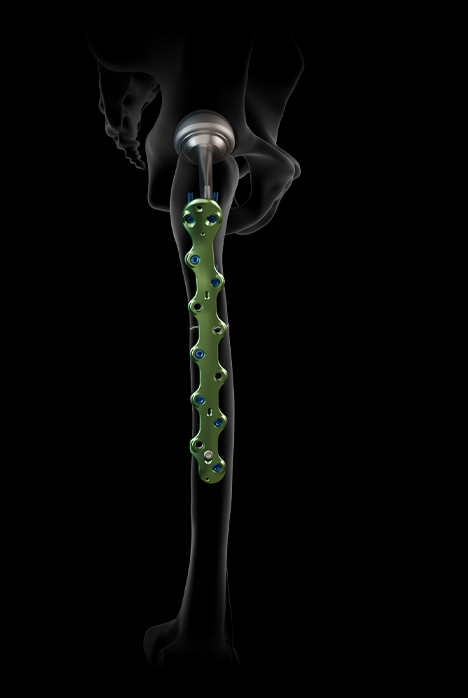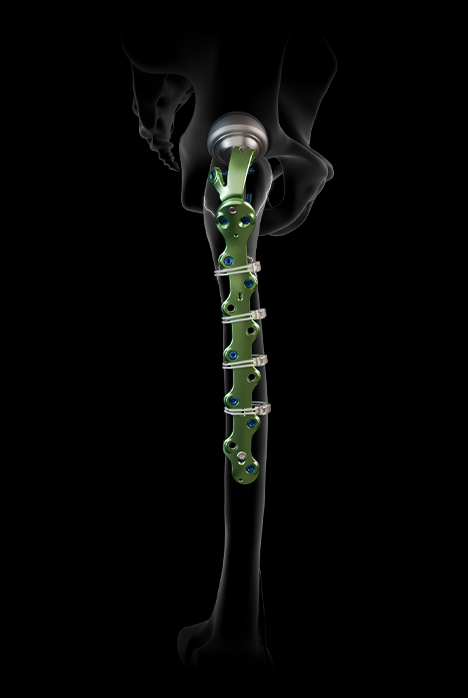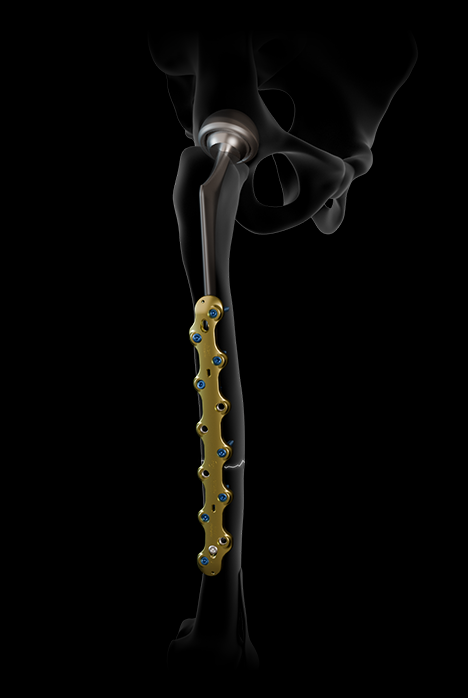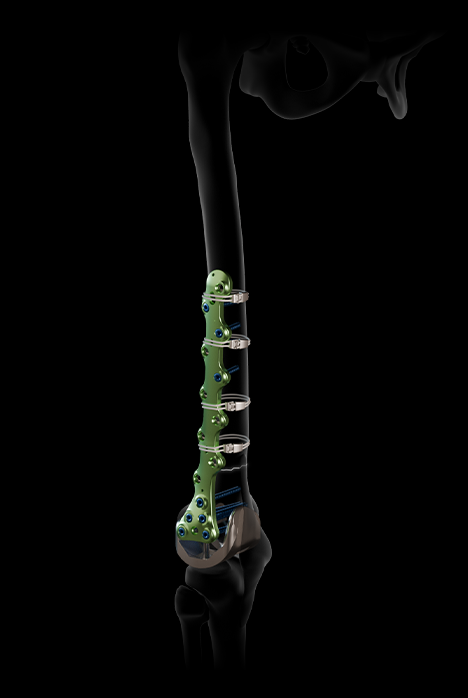The implants from the Xpert PFP range are intended for periprosthetic femur fractures in adults.
The Xpert PFP line represents a modern generation of periprosthetic plates. It offers a varied range to treat fractures of the femur containing a hip or knee prosthesis.
The number of total hip and knee prosthesis implantations and revisions has been steadily increasing in recent years due to the aging population. This leads to a rise in the number of periprosthetic fractures.
These fractures, although possible at any age, most frequently affect older patients who suffer from degraded bone quality and an increased risk of falls.
Periprosthetic fractures are particularly complex to treat, notably due to the many comorbidities in geriatric patients. To address this, Newclip Technics has developed a complete range dedicated to the treatment of periprosthetic femoral fractures.
To do so, Newclip Technics relied on the Vancouver classification to offer a solution covering all types of fractures.
Vancouver classification for periprosthetic femur fractures in the presence of a total hip prosthesis stem:
A Fracture of the trochanteric region
– AG: greater trochanter
– AL: lesser trochanter
B Fracture around or distal to the stem
– B1: stem fixed to the bone
– B2: stem loosened
– B3: stem loosened with inadequate bone quality
C Well distal to the stem
Manage all types of periprosthetic femur fractures.

Xpert PFP offers proximal plates in 3 sizes, to treat Vancouver type B fractures.
These highly anatomical plates also have the advantage of being equipped with polyaxial holes along the entire plate, allowing the screws to be oriented as desired to avoid the stem of the prosthesis.
The screw fixation system is the same throughout the plate using 4.5 mm diameter screws.

The Xpert PFP range also offers a hook plate solution, allowing fractures at the greater trochanter to be effectively treated.
Two sizes of hook plates are available, as well as two sizes of hooks to be assembled with a proximal plate.
These two types of hook plates have been designed with a posterior bracket to prevent the greater trochanter from slipping during osteosynthesis.

Two sizes of diaphyseal plates are also available as part of the Xpert PFP range.
These plates are mainly designed to treat Vancouver type C fractures.
Due to the significant symmetry of the diaphyseal femur, these plates are not anodized and are therefore applicable to both sides without distinction.

Three different sizes of plates are included in the Xpert PFP range.
This type of plate is designed to treat periprosthetic fractures of the femur at knee prosthesis level.
The polyaxial holes along the entire plate make it easier to avoid difficult areas at the distal femur, in particular the intercondylar fossa.




Key features of the Xpert PFP range.
- Anatomical plates:
- Xpert PFP plates are machined directly from solid material, making them more anatomical and ideally adapted to the patient’s anatomy, providing better overall mechanical resistance
- A simple polyaxial system:
- All the holes on the Xpert PFP plates are polyaxial, offering a 25° conical angular freedom, which helps avoid all sensitive areas of the femur
- Effective compression thanks to the ramped oblong hole:
- The presence of a ramped oblong hole on all Xpert PFP plates allows for bone-to-bone compression and thus a more efficient fracture reduction
- A cerclage system according to preference:
- The Xpert PFP plates can be combined with a cerclage system using a cerclage button, or without a button thanks to the “wave shape” design around the holes along the plate
- A design conceived for greater trochanter protection:
- The hook plates in the Xpert PFP range are designed to protect the greater trochanter through the posterior tab of the plate, thereby preventing slippage of the greater trochanter during osteosynthesis
